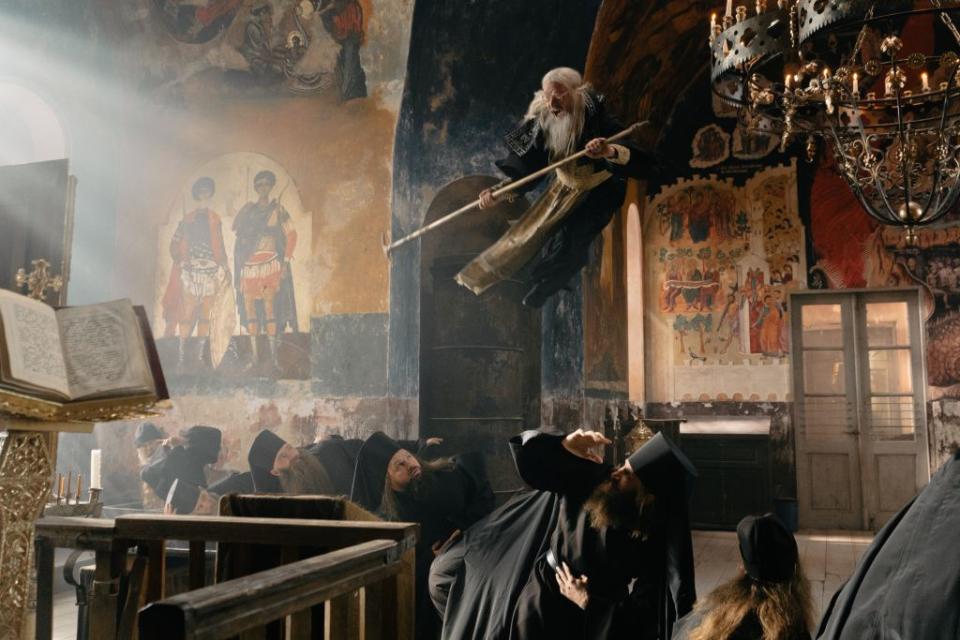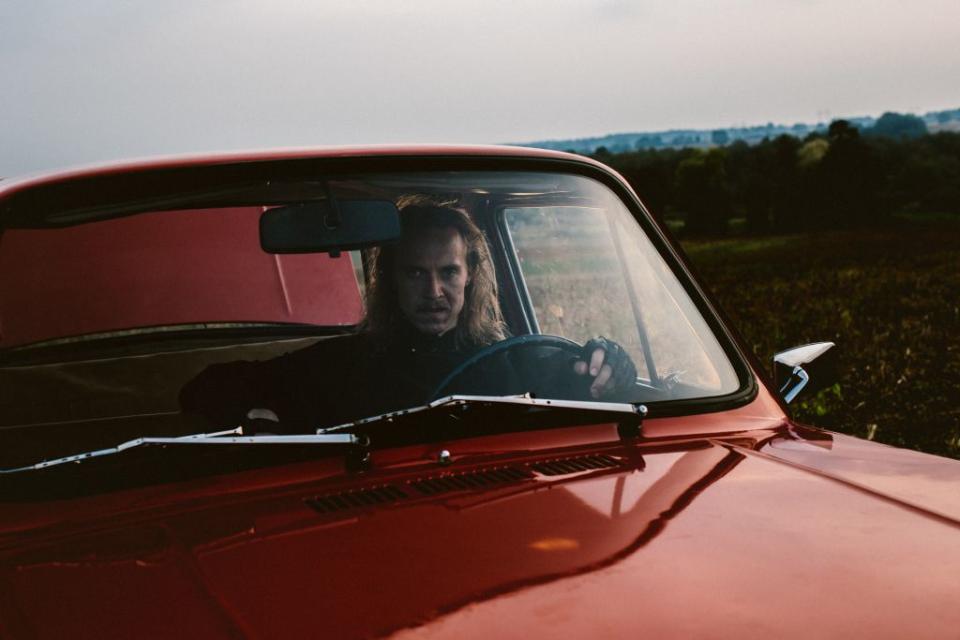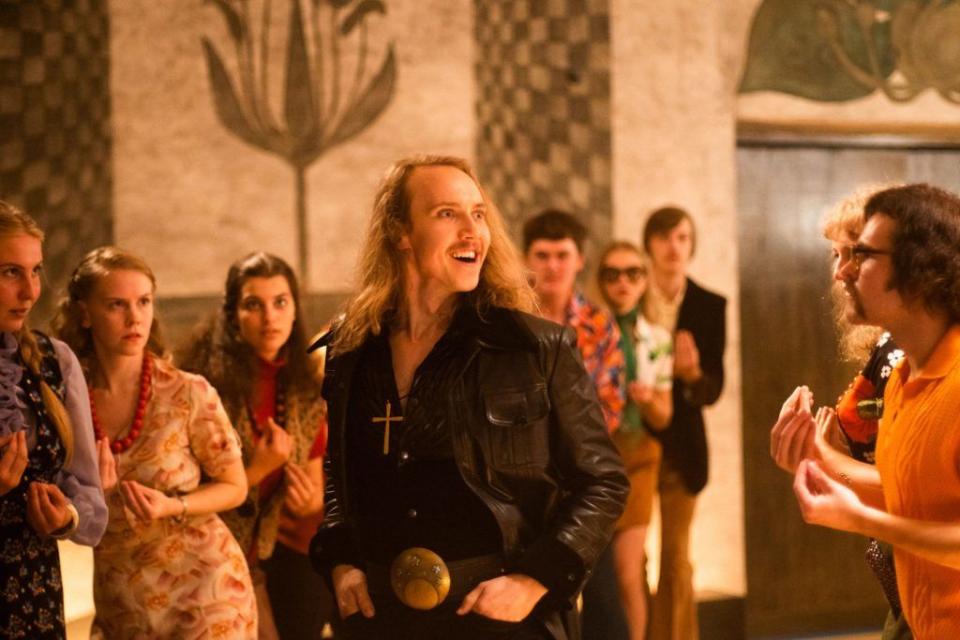A Kung Fu Comedy About Orthodox Monks Proves Estonia Is Home to Europe’s Most Peculiar Cinematic Storytelling

- Oops!Something went wrong.Please try again later.
For Europe’s most peculiar storytelling, look no further than the ex-Soviet republic of Estonia — and more specifically to the kooky otherworldly tales of director Rainer Sarnet.
The few Estonian productions that reach Western audiences are often historical war dramas, most recently the Oscar-nominated “Tangerines” (2013) or the Oscar-shortlisted “Truth and Justice” (2019). But those straightforward epics occupy a space far from what interests Sarnet.
More from IndieWire
'Oppenheimer' Wins PGA for Outstanding Producer of Theatrical Motion Pictures (Full List)
Da'Vine Joy Randolph Has No Expectations for the Oscars: 'To Me, I've Already Won'
“My mother asked me once, ‘Why don’t you make calm and normal films?’ And every time before I start filming, I think, ‘Now I will make a normal film.’ But so far I haven’t succeeded,” Sarnet told IndieWire with a chuckle during a recent video interview.
Wherever there’s mysticism, that’s where he’ll go. That’s how he came across the concepts that inspired his latest brainchild, “The Invisible Fight,” which premiered at last year’s Locarno Film Festival and is now out in U.S. theaters. It’s a kung fu comedy set in the 1970s about an orthodox monk fighting to the tune of Black Sabbath. You know, normal arthouse fare.
Sarnet, 54, first started studying Orthodox Christianity and its culture when preparing to direct a film adaptation of Fyodor Dostoevsky’s “The Idiot” over a decade ago. “I was listening to many orthodox songs, and I was googling something about orthodoxy almost every evening,” he recalled. One of the texts he discovered was the book “Not of This World,” which included the stories of two orthodox monks in Russia who died young.

Obsessed with the subject and already interested in making a movie about orthodoxy, Sarnet visited Pechory Monastery, where those monks in the tome had lived. While there, he realized that most monks have an absurd sense of humor. That’s when he decided that, rather than make a traditional drama, he would approach it as an outrageous comedy.
“I visited that monastery in Russia four times,” he said. “I also visited different monasteries in Athens, Greece and Serbia. It was like orthodox tourism for me.” [Laughs.]
Through the research process, Sarnet underwent a spiritual awakening and decided to convert to orthodoxy. “I did things I have never done before because I wasn’t a kung fu fan at all, and I didn’t used go to church,” he said. “It was a life-changing moment.”
From his deep dive, the director gleaned that many monks were hippies prior to becoming religious men. They saw life in the monastery as their personal rebellion against materialism. For Sarnet, the fact that these monks wore black, had long hair, and resided above catacombs covered in human skulls seemed inherently rock-and-roll. Black Sabbath, he thought, was the right music for this topic since their lyrics deal with hell and demons.
“I asked my spiritual father at the monastery, ‘Is it OK to use Black Sabbath in such context?’ And he said, ‘Of course, Ozzy [Osbourne] is a believer,’” Sarnet said.
The inclusion of kung fu fighting surfaced partially from factual events. Father Rafael (played in the film by actor Ursel Tilk), one of the main voices in “Not of This World,” served in the Soviet army on the border between the USSR and China. One day, the military camp was attacked by Chinese bandits, and all the soldiers were killed except for him.

Sarnet injected his own whimsy, imagining that perhaps those criminals could have known kung fu. For the director, “The Invisible Fight” is an amalgam of the many things not allowed while growing up in Estonia under Soviet rule, namely pop culture and religion. “Like Rafael says in my film, ‘Everything cool is banned in the Soviet Union.’”
This is not the first time Sarnet has baffled and delighted viewers with his one-of-a-kind visions. His 2017 black-and-white folk horror “November,” Estonia’s Oscar entry in the Best International Feature Film category that year, earned positive reviews from bewildered American critics discovering his work without preconceptions.
“’November’ is all-caps CRAZY in the best, funniest, most exhilarating way possible. A mere description cannot, I recognize, do its out-there-ness true justice,” wrote Nick Schager for The Daily Beast when Oscilloscope Laboratories released it stateside in early 2018.
Adapted from Estonian writer Andrus Kivirähk’s 2000 novel “Old Barny or November,” the striking dark fable centers on impoverished 19th-century peasants interacting and bargaining with a bevy of supernatural entities, including the hilarious and perplexing kratts: sentient beings built from wooden pieces and farm equipment and powered by a human soul.
“It’s a very funny book, and it points out that the basic value in Estonian fairytales is greed. There’s a fox stealing milk, and the peasants are cheating the Devil,” Sarnet said about the source material. “There are very contradictory things in it. It takes place in a very pragmatic world, but then there are also ghosts, werewolves, and magic.”

Considering the visual intricacy of his worlds, it makes sense that Sarnet started out working for a year at an animation studio before attending film school. That love of drawing kickstarts every project. “When I’m writing a script, I draw pictures,” he said.
For “The Invisible Fight,” Sarnet visualized what he wanted the kung fu technique to look like on screen after studying at least 20 classic films in the subgenre, mainly those from the 1970s. Of those titles, his favorite was 1979’s “Dance of the Drunken Mantis.” However, the moves on that feature proved too difficult to replicate, pushing Sarnet to hire a professional fight choreographer to handle the action scenes.
Born in Taiwan but based in Los Angeles, seasoned stunt coordinator Eddie Tsai only had a week before production once he arrived in Estonia to create what Sarnet describes as “orthodox kung fu,” implementing religious gestures and poses into the fighting moves.
Watching “The Invisible Fight,” it’s evident why Sarnet thinks of director Quentin Tarantino as “the king of contemporary cinema.” Among the Estonian storyteller’s other influences is Rainer Werner Fassbinder, particularly for the melodramatic acting in “The Bitter Tears of Petra von Kant.” Then there are David Lynch and Jim Jarmusch, whom, along with Tarantino, Sarnet sees as directors who’ve retained their idiosyncrasy despite being close to the limelight.
“Their work is like if the Hollywood industry and auteur cinema had a dialogue,” he said. “They’re keeping their own voice, but they’re using the impact that Hollywood has.”
Away from the deceiving glitz of the U.S. film industry, Sarnet has developed a niche but mighty following in his homeland without compromising any of his cinema’s attributes some may deem strange — like his heroes. “I sing with my own voice,” he said. “I have a small audience in Estonia, but because they support me, I feel like someone needs these kinds of films.”
Despite what his offbeat body of work so far may suggest, Sarnet doesn’t see himself as a genre filmmaker, but rather an auteur whose perspective uncovers our weirdness.
“The truth about humans is that we are all bizarre in our hearts and souls, but we try to hide it,” he said. “What’s really going inside us is not normal at all.”
“The Invisible Fight” is now playing in New York and Los Angeles via Kino Lorber.
Best of IndieWire
Christopher Nolan Movies, Ranked from 'The Dark Knight' and 'Tenet' to 'Dunkirk' and 'Oppenheimer'
Where to Watch This Week's New Movies, Including 'Argylle' and 'How to Have Sex'
Christopher Nolan's Favorite Movies: 40 Films the Director Wants You to See
Sign up for Indiewire's Newsletter. For the latest news, follow us on Facebook, Twitter, and Instagram.

